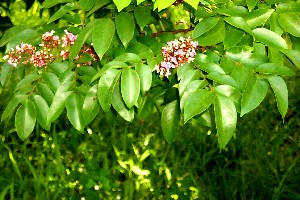
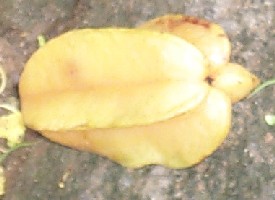
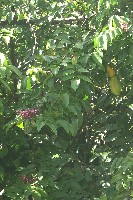
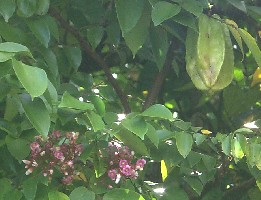
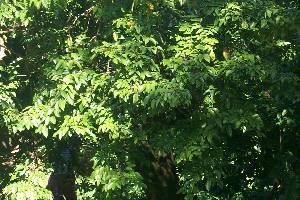
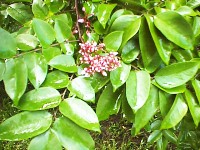






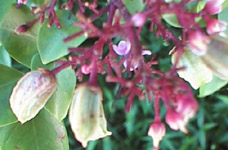
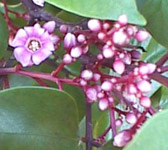
Scientific Name: Averrhoea Carambola
Names:
TREE
The Carambola is a tree that can reach a height of 5-12 m. It has a lot of branches thus producing a lot of water shoots.The young plant has a shape of a pyramid whereas the older plant has a round shape. The young carambola plant requires shading of 40-50%.
Proper prunning of the carambola plant is important as to get a good shape for easy maintenance and subseguently good yield. This plant grows on terrestrial areas.
LEAVES
The leaf of the Carambola tree is small and it has an oval shape (larger end at the bottom towards the petiole).The arrangement of the leaf is opposite,in which the leaves are arranged two per node.The upper surface of the leaf is smooth and is yellowish in colour.The lower surface is dark green in colours. The leaf is 2-4 cm wide and 2-9 cm long.
FLOWER
The flower is small and purplish in colour. It has 5 sepals,5 petals,and 5 stamens. The ovary is inferior (it is located under the style. The flowers are formed all along the trunk,branches and twigs.
FRUIT
The fruit consists of 5 prominent ribs which run the entire length of the fruit. When the fruit is cross-cut, it will give a star shape. The fruit is green when small and turns yellow or orange when ripe. The flesh of this fruit is juicy,crispy,sweet,but sourish in taste.The fruit is approximately about 4 inches in length and 2-3 inches in width.
CULTURAL USAGE
The leaves of the Carambola can be used to treat itchiness. The leaves are to be chopped or crushed to extract the juice. Apply the juice on the skin or lesions to relieve itchiness. This can be done for 3 times a day.Rub the juice only to where it itches but not to your skin.
Other than this,people eat this fruit and there is not only one medicinal purpose for this plant.
DATE: November 30 2000
BY: ALIK B.PALIK